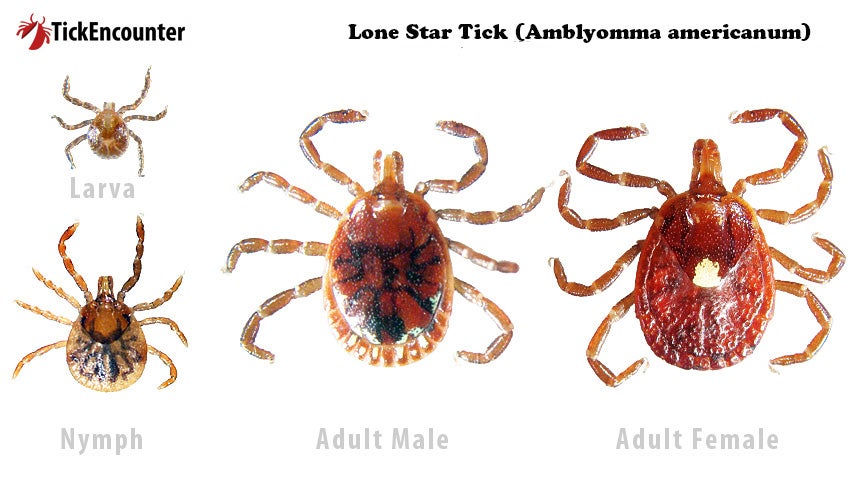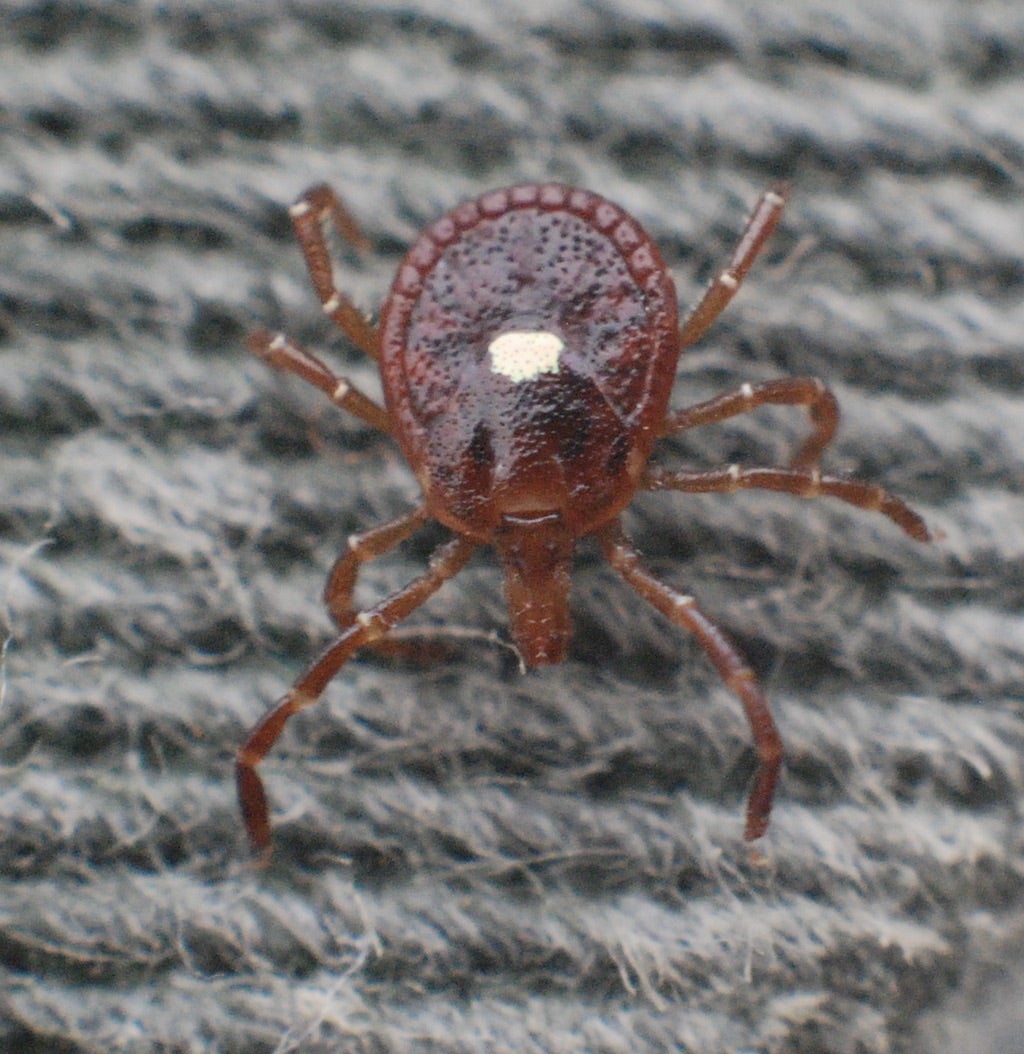Motion: On
Motion: Off
Contrast: Standard
Contrast: High
Apply site-wide
Tick Photo Credit: James Gathany, Dr. Amanda Loftis, Dr. William Nicholson, Dr. Will Reeves, Dr. Chris Paddock, via CDC Public Health Image Library
LONE STAR TICKS
- See the Star: Female lone star ticks stand out from other ticks because of the bright white dot on their back that can even be seen when they’re engorged.
- No star to see?: Other life stages of this tick may have some white, or be completely brown so it’s important to “spot” the differences between these life stages and other tick species. Need help IDing a tick? Send a photo to TickSpotters.
- Quick Tick: If there ever was such a thing as tick races, then lone stars would win, hands down against other North American ticks. That means they can disappear quickly under untucked clothing and get into all kinds of hidden locations. And they’re also very aggressive biters. Here are some tips for being TickSmart to protect against tick bites.
- Risk: Lone star ticks are expanding their home range and as they move the risk of tick-borne illnesses changes creating a growing public health concern
LONE STAR TICK ASSOCIATED DISEASES
- No Lyme, but: Numerous vector competence and tick testing studies have shown that lone stars do not transmit the germ causing Lyme disease. That’s good news, but they do carry other disease-causing germs and some are deadly.
- Cooked: If you’re a fan of eating meat, lone star ticks could be your #1 nemesis. AGS or alpha-gal syndrome is a red-meat allergy that develops in some people following a bite from a lone star tick. Here are some signs you might have AGS.
- What do you know: A 2023 CDC survey reveals health care professionals are unaware of, or uncertain about diagnosing alpha-gal syndrome.
- Germs: Lone star ticks can spread germs that cause a variety of diseases including Ehrlichiosis, Tularemia, Southern Tick-Associated Rash Illness (STARI), Heartland Virus, and Bourbon Virus.
LIVING WITH ALPHA-GAL SYNDROME (AGS)
Tips for living with AGS from the Two Alpha Gals
- AGS 101 :AGS is an allergic reaction triggered by a Lone Star tick bite. As the tick feeds on the individual, it injects a sugar molecule named galactose-alpha-1,3-galactose (commonly referred to as alpha-gal) through saliva into the skin. This exposure can prompt the reprogramming of the immune system of certain individuals to produce IgE antibodies, specifically targeting the alpha-gal sugar. What makes AGS unusual is the timing—unlike most food allergies that cause symptoms within minutes, AGS reactions often happen 3 to 6 hours after eating red meat or other mammal-based products.
- RI is newly at risk. What do folks have to say?








